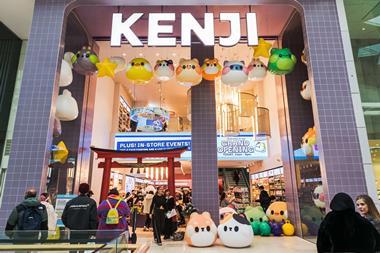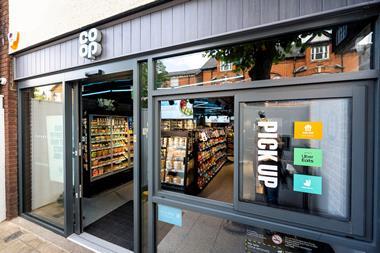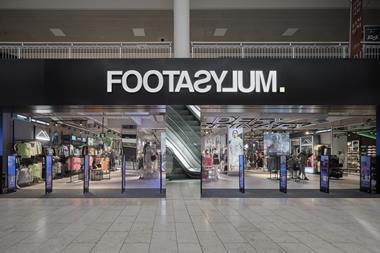When the HMV Group revealed its annual sales in the early part of the summer, investors might have been forgiven for a sharp intake of breath. Sales for the year to April 28 had grown by 3.8 per cent, from£1.826 billion to£1.895 billion: not bad in the present climate. But like-for-like sales were down 3.5 per cent and pre-tax profit had collapsed, plummeting 51 per cent during the year. It all seemed to confirm the view that this retailer’s time had passed and that, as the digital express pulled up, HMV was left standing at the platform.
In fairness, the HMV Group is an organisation composed of several diverse, but related, elements and its Waterstone’s bookstore chain achieved a sales climb of 28.4 per cent (although like-for-likes were down), with better margins than the core HMV music shops. The Waterstone’s numbers were flattered by the inclusion of Ottakar’s sales, all of which equated to a much better operating profit than HMV could muster.
But, in the light of recent performance, the figures for 2006/2007 begin to look like a bad dream.
In its most recent trading update, for the 16 weeks to September 1, the HMV chain showed like-for-like sales growth of 9.6 per cent in its UK and Ireland music stores. Clearly, something is going right at last and one of the newest elements that hopes are being pinned on is in that retail hotbed, Dudley.
At the town’s Merry Hill shopping centre, HMV opened its “next-generation store” two weeks ago (a spokesman insisted that it should not be referred to as a “store of the future”). The 8,000 sq ft (745 sq m) shop represents the latest thinking from the retailer. Designed by Dalziel + Pow, this is a shop that incorporates a large number of features not found in other HMV branches – most of which centre on the notion of giving customers the opportunity to network socially and take advantage of a number of ways of obtaining and paying for your entertainment.
Traditionally, music stores are dark places where truculent youths can melt into the shadows as they peruse the latest offering from the Paranoid Goths or ponder the benefits of buying Industrial Accident 14, a computer game, against the old-school Car Park Assassin. At least, that is what you might think if you were to visit most of the entertainment store environments that fill our high streets.
At Merry Hill, though, things are different. Situated on the mall’s first floor, the single-level shop has glossy black glass for its frontage, into which a large plasma screen has been set. This plays clips of films and videos and is intended to act, as all good windows should, as an eye-catcher for passing shoppers.
Clever piece of retail entertainment
Pleasingly, not all the window is black. A large clear square, framed by the coloured glass, affords would-be shoppers the chance to take a peek into the interior. And what they are most likely to see is the cash desk, which occupies the whole of the foreground. This is a clever piece of retail entertainment, where HMV customers look out at window shoppers looking in. The window also features the new low-key lower-case hmv logo at its extreme right. So far, this looks like an exercise in slick contemporary minimalism.
There is more to the store frontage than the window, however. As it is in a mall, the store has an open front. There are the usual bollards, with sensors informing staff if stock is exiting the store without having been paid for, but rather than the standard nondescript grey, these are coated in plastic and have the same black gloss look that features in the windows.
This is minor detail, because try as you might, it is hard not to stare into the shop. HMV regional manager Samantha Tyrer says that, when people visit a music store, they “fall into the trap of thinking that stores are easy to navigate. They aren’t”. Individual products are brightly coloured and, en masse they look the same, so finding your way to the area that specialises in the entertainment of your choice can prove difficult.
Not so in the next generation shop. For a start, things are brighter and lighter. At the entrance is what chief executive Simon Fox refers to as the “one-stop shop” – an area where you can come in, find the latest chart sounds, pay and leave. Tyrer observes that the various elements of the interior are visible from the front. The graphics package that has been put together by London-based consultancy Venture 3, with lower-case commands such as “watch” and “listen” telling shoppers where they are likely to find what they are looking for, does its job well.
At the front of the shop and above the centre-floor fixturing is a white, reflective Barrisol ceiling intended to create a sense of space, and the floor is off-white matt concrete. The fixtures are not arranged in the long lines familiar to devotees of this sector. Instead, they have been positioned to create zones in the store, encouraging dwell time rather than the in-out mentality.
To the right is the cash desk, a long black feature with cinema-style signage above it. In front of this is a perimeter zone with lower case “cool stuff”, for which read belts, hats, t-shirts and alarm clocks, all emblazoned with the names of your favourite bands.
Towards the back of the store, things shift into a different gear. HMV has made much of its social networking web site, due to launch in November, and a zone with the word “hub” above it makes this an in-store physical reality. Eight Apple computers on a low table provide shoppers with a choice of free web sites, ranging from the BBC to MySpace and, if they feel so minded, they can sip on a fruit smoothie from the adjacent Lovejuice fruitbar.
For those in search of new music, there is a bank of kiosks that form part of the hub and, here, shoppers can scan and listen, download a range of free video and music clips to a memory stick or order items from the HMV web site. On the day of visiting, Fox and his team demonstrated how to use one of the many touchscreens dotted around the store. It didn’t work and, for a moment, the chief executive’s eyes flickered heavenwards. Peace soon broke out when the next one performed and it was apparent that this is a wholly interactive environment.
At the back of the store, although far from hidden, is the gaming area, where shoppers can try out the latest Xbox games before deciding whether or not to buy. And there are a lot of CDs and DVDs with films and music and almost everything is instantly accessible.
As well as Dudley, there is a smaller HMV next-generation store on trial at Tunbridge Wells (how do they choose their locations?) and shoppers in Liverpool and High Wycombe are set to benefit from the new look later this year, while Heathrow’s Terminal 5 will be graced with a store next year. Meanwhile, the Dudley store looks very much better than anything on offer in the rest of the chain and early results are encouraging. Fox says that the plans are in place for between 20 and 40 next-generation stores next year. The big question is, however, how quickly a full-scale roll-out can be undertaken and whether the economies of scale involved in such an operation will prove sufficient to make this a viable option. On the day of visiting, the nearby Virgin Megastore was almost empty.


























No comments yet